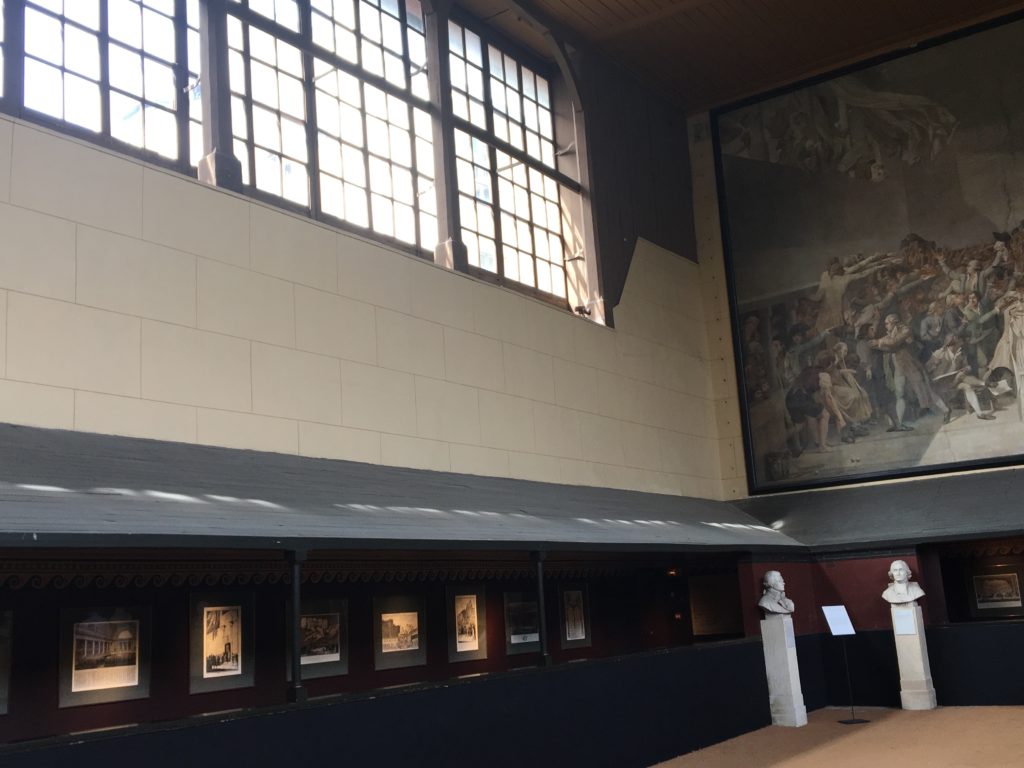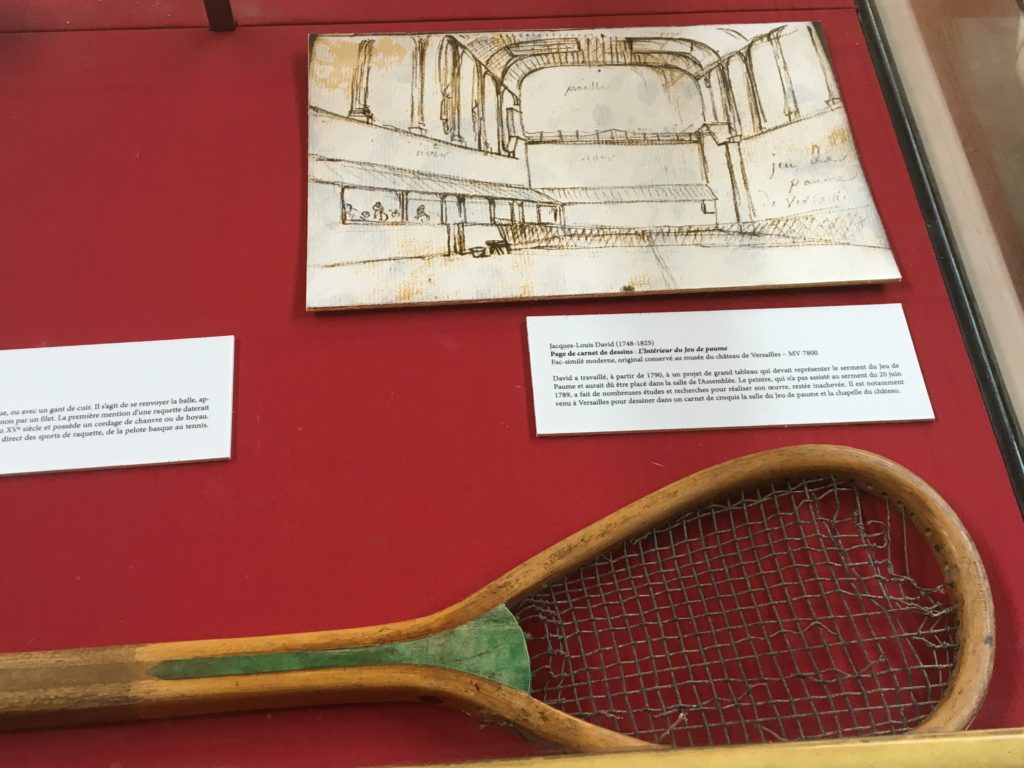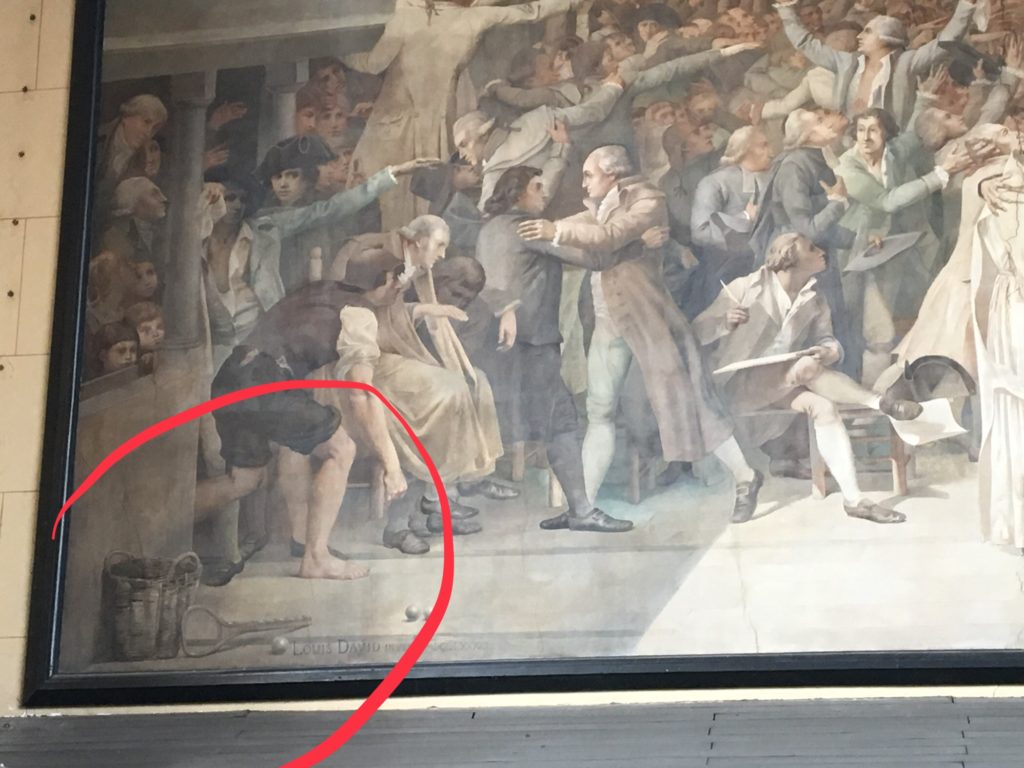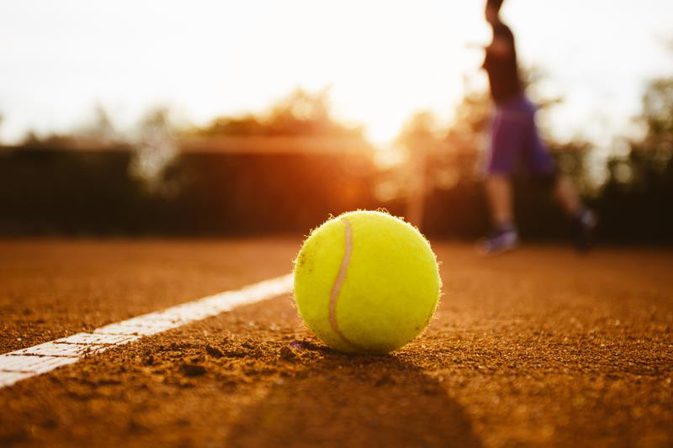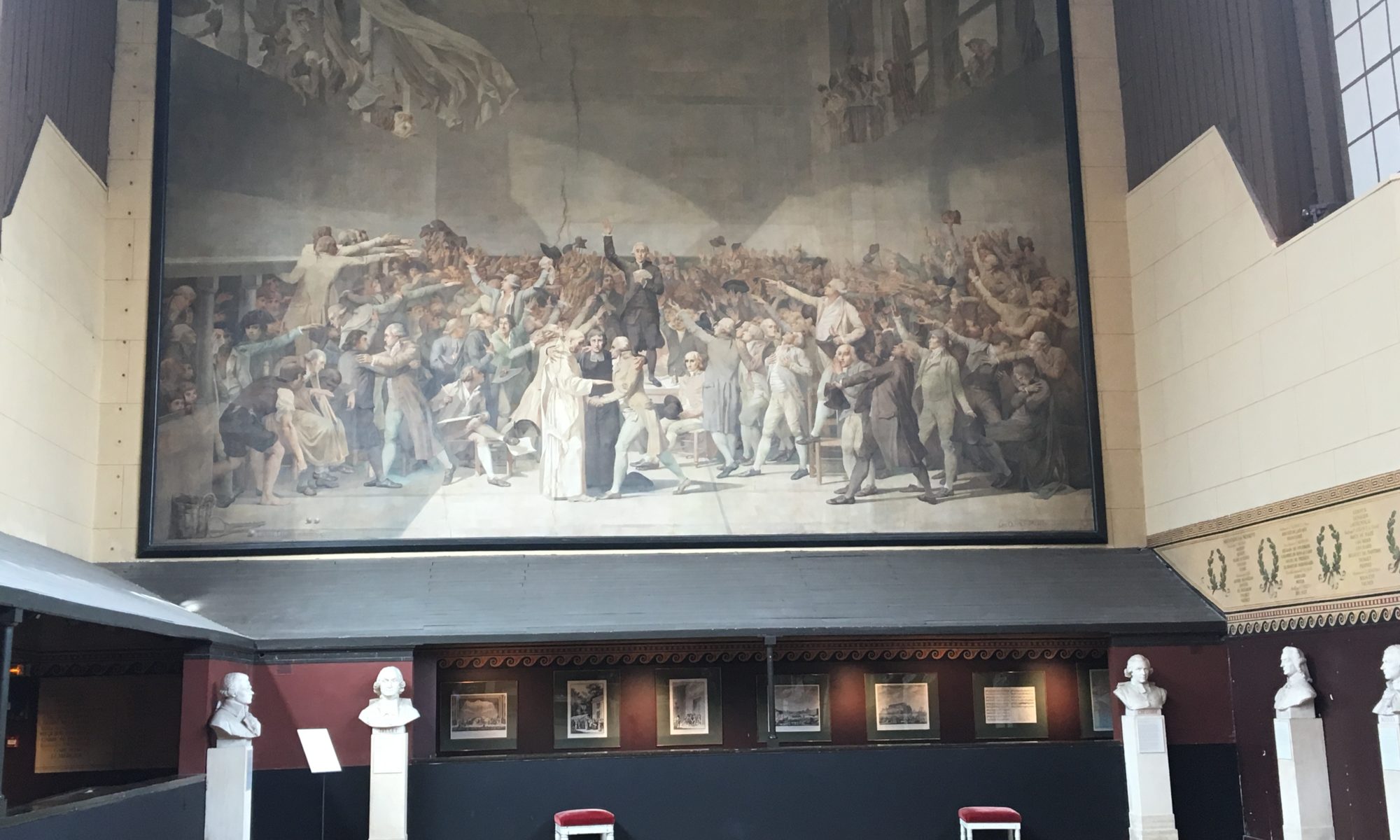by Net and Clay in Versailles, France
A little itty bitty spot on the massive map of the Palace and Gardens of Versailles, outside of the grounds where you don’t have to duck selfie sticks or be jostled by a tour group, is called the Royal Tennis Court. After much map-spinning and a venture down an unremarkable side street, we found the remote attraction. We, and two others, had the site to ourselves.
The only sign in English explained, “[r]eal tennis, a precursor of present-day lawn tennis, was played by the members of the court, notably in the reigns of Louis XIV, Louis XV and Louis XVI. Versailles’s real tennis court was built privately in 1686 but the members of the royal family used it frequently.”
Real tennis is an obscure, cult-like sport in France, England, Ireland, Australia, and even the United States, where it is called “court tennis.” As you can see from the photos, a real or court tennis court includes sloping roofs, called penthouses, styled after medieval street awnings, which is where and when the game originated. Those penthouses and three of the four interior walls are used for play. The racquet is asymmetrical and wooden and the balls are handmade. The rules are complicated and described as rules created on the fly by someone who doesn’t want to lose (e.g., a double bounce may be allowed in certain circumstances).
There are only 11 court tennis venues in the United States, and many years ago I had the opportunity to see the one in tony Tuxedo Park, New York. While working for a New York-based law firm called LeBouef, Lamb, Greene and MacRae, one of the partners hosted the firm’s annual summer outing at the Tuxedo Club, which holds itself out as “one of the most unique private clubs in the world.” You won’t find the firm in existence anymore though because several of its partners and managers were overcome by greed and power and did things such as dipping into client trust found accounts and sending jocular emails about it. Those individuals were notoriously and criminally prosecuted for embezzlement, wire fraud and mail fraud, and have the additional distinction of causing the largest law firm collapse in history. And so the firm’s Jazz Age ended because the snake ate its own tail, but I digress….
The real tennis court at Versailles was significant for another reason. “On 20 June 1798 when the members of the Third Estates-General found the Hall of Revels, where the Estates-Generals was to be held, locked to them, they decided to meet in the Real Tennis Court. There they took the oath never to separate and to meet ‘wherever circumstances dictate until the constitution of the kingdom be established and consolidated on solid foundation.’”
Versailles’s real tennis court having been the situs of an important act in the country’s democracy was turned into the Museum of the French Republic, explaining the busts that you see in the photos. The large painting on the wall is a commemoration of the oath that the individuals of the Estates-Generals took, and their names are inscribed on a frieze around the inside of the real tennis court. In the lower left corner of the painting is an image of the real tennis racquet and balls, an homage to the venue where this historical event took place.
P.S. My learned cousin, who taught the French Revolution in A.P. history before her retirement, informed me that the Third Estates-Generals picked the real tennis court at Versailles in which to meet, not only because they were locked out of their hall but because it was raining outside which kept them from meeting in the gardens. The indoor tennis court was the only place with space to accommodate their numbers!
